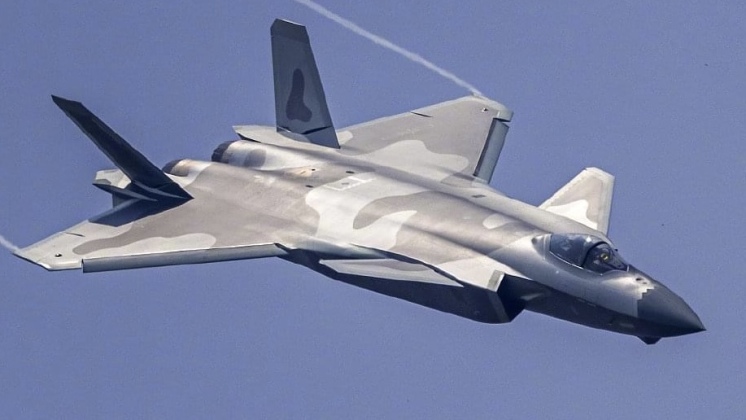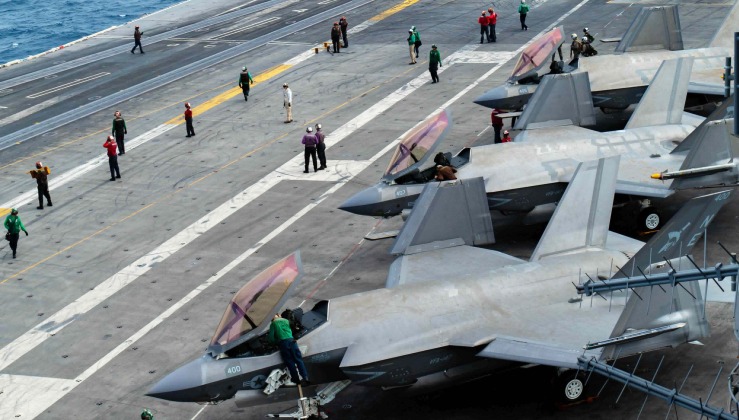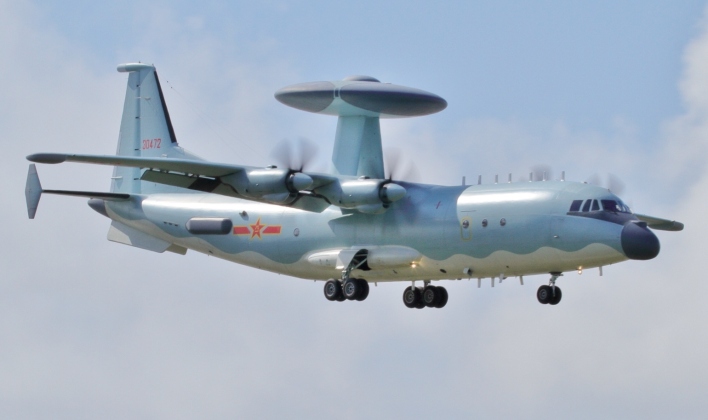The world’s only two fifth generation fighters in production and fielded at squadron level strength, the Chinese Chengdu J-20 and the American Lockheed Martin F-35, have seen their first ever encounter which marks the first between two non friendly fifth generation fighters. Commander of the U.S. Pacific Air Forces, Air Force General Kenneth Wilsbach, confirmed that the two aircraft had at least one encounter over the South China Sea with the Chinese jets having been supported by KJ-500 airborne early warning aircraft.“It’s a bit early to say what they intend to do with the J-20, so really all we’ve seen it do is air superiority,” he said. “But we notice that they are flying it pretty well. We recently had – I wouldn’t call it an engagement – where we got relatively close to the J-20s along with our F-35s in the East China Sea, and we’re relatively impressed with the command and control associated with the J-20. We’re seeing relatively professional flying and it’s still too early to tell exactly what they intend to do with [the J-20] – whether it’s going to be more like an F-35 that’s capable of doing many, many missions or more like an F-22 that is primarily an air superiority fighter that has an air to ground capability.”

General Wilsbach further elaborated on the Chinese fleet: “The KJ-500 plays a significant role in some of their capability for long range fires. Some of their very long-range air-to-air missiles are aided by that KJ-500. Being able to interrupt that kill chain is something that interests me greatly.” The J-20’s longest ranged known missile the PL-15 has an estimated engagement range of between 200 and 300km, and comfortably outranges anything in the American arsenal while boasting an AESA radar for guidance which American air to air missiles lack. For such a long range munitions a particularly powerful sensor suite such as that which large fighters like the J-20 can accommodate is vital, but support from aircraft such as the KJ-500 can help to provide greater reliability and further increase situational awareness.

The U.S. has deployed F-35s to East Asia in considerable numbers, including the F-35A variant used by the Air Force, the B variant used on assault carriers by the Marines, and the C variant used on the Navy’s supercarriers of which one crashed in the South China Sea in January 2022. The three variants entered service between 2014 and 2019. The J-20 is deployed exclusively from Chinese territory, and has seen its capabilities improved rapidly since it entered service in 2017 ranging from new engines to the unveiling in October 2021 of a twin seat variant – the world’s first ever fifth generation twin seater.
The J-20 and F-35 are two of just four fifth generation fighters in service today, with the former being a heavyweight aircraft seemingly tailored exclusively to air superiority missions while the latter is a lighter single engine jet which was designed to be affordable in large numbers and have lower operational costs. America’s own heavyweight fifth generation fighter, the F-22 Raptor, is from a similar weight range to the J-20 but saw orders to terminate production given less than four years after entering service due to a number of performance issues and extreme overruns in its operational costs. Only 187 F-22s were ever produced with none exported, and the troubled fighter is slated for a retirement in the 2030s decades ahead of prior projections.

The fourth fifth generation fighter, the Su-57, is a Russian design which entered service over three decades after the country’s first fifth generation prototype began construction. Only five aircraft are currently thought to be in service meaning it is still not fielded at squadron level strength, although three squadrons are expected to be in service by 2027. The fighter is not considered as sophisticated as the J-20 or F-35, reflecting Russia’s smaller scale of research and development, but compensates by capitalising on areas of Russian strength including use of world leading missile technologies for both strike and air to air roles, use of laser defence systems and a number of other unique capabilities. While it was for decades expected that the first meeting between two fifth generation fighters would be Soviet or Russian jets with those from the U.S., the Soviet collapse and Russian post-Soviet decline combined with China’s rapid emergence as the world’s largest economy and a leader in military research and development meant this was not the case.
